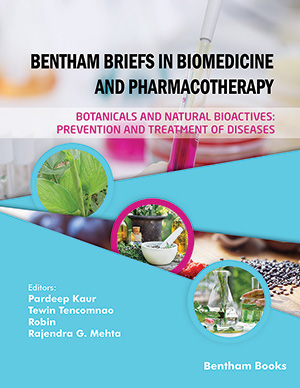Abstract
Aims: Bixin and norbixin are natural antioxidants used as pigments in the food industry, but their chemical structure makes them susceptible to environmental factors (light, oxygen, and temperature).
Background: Nanoencapsulation techniques can improve the stability and solubility of these compounds in addition to reducing particle size which can increase the surface-to-volume ratio and provide many attractive and unique properties to the nanoparticles.
Objective: In this study, sodium alginate was used as wall material for the encapsulation of bixin and norbixin in different concentrations (1.25 x 10-3, 2.5 x 10-3, 5 x 10-3 and 7.5 x 10-3 g/g of biopolymer), by emulsification/internal gelation method.
Methods: The emulsification/internal gelation method was used to elaborate bixin or norbixinloaded nanospheres. The internal phase of the water-in-oil (W/O) emulsion was prepared with an aqueous solution of sodium alginate (1.5% w/v - 40 mL), 0.12 g of CaCO3, bixin or norbixin pigments, and mechanically stirred for 15 min at 700 rpm.
Results: Nanospheres containing the highest concentration of both carotenoids showed better encapsulation efficiency, with 37.86% for bixin and 51.47% for norbixin, and these formulations were used for characterization analyses. The mean size of the nanospheres was 741.9 ± 41.0 nm, 622.9 ± 71.0 nm, and 589.5 ± 99.1 nm for control particles, bixin, and norbixin, respectively. The addition of both carotenoids resulted in particles with a yellow-red color, which demonstrates the encapsulation of natural antioxidants. The thermal analysis results may indicate an increase in the thermal stability of the pigments after encapsulation, in addition, the nanospheres exhibited the ability to scavenge the ABTS+ radical. Carotenoids release test in food simulant (95% ethanol) presented a rapid release in the first hours and maintenance of concentration for 10 days.
Conclusion: Results showed that these nanospheres could be an alternative to the application of these carotenoid pigments in food matrices and food packaging.
Keywords: nanoencapsulation, carotenoids, annatto, natural antioxidants, foods





























